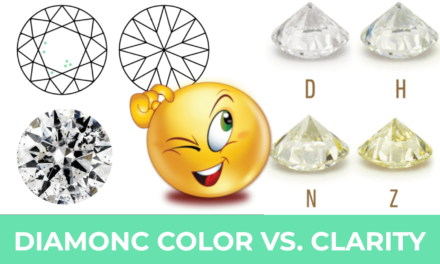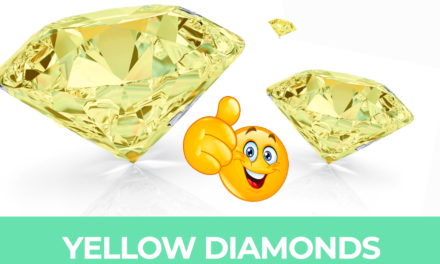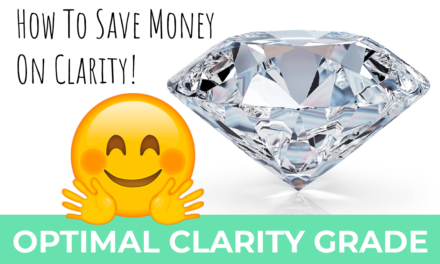My website is reader-supported. Buying through links on my site may result in me earning a CUSTOMER REFERRAL FEE at no extra cost to you.
Check out the latest deals at our top diamond vendor choice: James Allen
Fancy Colored Diamonds – An Insider’s Guide
Colorless diamonds typically become less valuable as hues of color become more visible. But, the opposite is true when it comes to fancy colored diamonds. Their value goes up the stronger and purer their color. Natural colored diamonds or fancy colored diamonds are extremely rare, which is why they’re so valuable. Because they are so rare some people decide to pick a fancy colored diamond for their engagement ring.
Any diamond that appears colored while face up, would be considered a fancy colored diamond, even if the color is light with weak saturation. Not all natural colored diamonds are equally rare, though. Compared to the more common fancy yellow and brown diamonds, diamonds with a visible tint of any other color are far more rare.
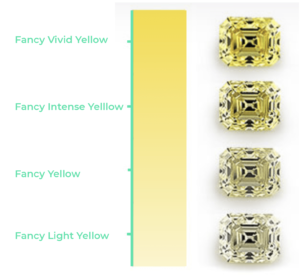 Blue, green, red and pink diamonds in moderately saturated medium to darker tones are exceedingly rare. All fancy colored diamonds have in common that they range in color strength. The rarest of all are the ones with a fancy vivid and fancy intense coloring. Such as an intense yellow or intense red diamond.
Blue, green, red and pink diamonds in moderately saturated medium to darker tones are exceedingly rare. All fancy colored diamonds have in common that they range in color strength. The rarest of all are the ones with a fancy vivid and fancy intense coloring. Such as an intense yellow or intense red diamond.
Fancy Red Diamonds
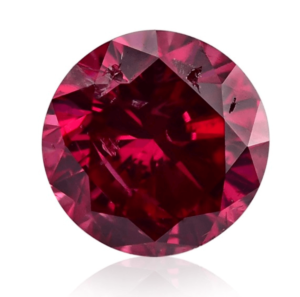 Diamonds that appear red or reddish are exceptionally rare and very valuable. Pure pink colored diamonds are more popular than grayish pinks, purplish, brownish or orangey pinks. Those in the diamond trade promote these very pretty stones as “rose-colored,” and the ones with a slight purplish tone as “mauve colored.”
Diamonds that appear red or reddish are exceptionally rare and very valuable. Pure pink colored diamonds are more popular than grayish pinks, purplish, brownish or orangey pinks. Those in the diamond trade promote these very pretty stones as “rose-colored,” and the ones with a slight purplish tone as “mauve colored.”
Fancy Blue Diamonds
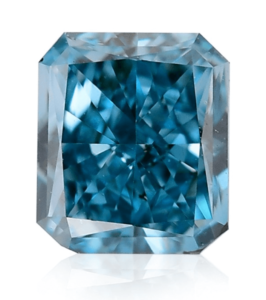 Blue colored diamonds are exceedingly rare indeed. You will usually see them in a slight grayish tone, rarely as deeply saturated as a typical blue sapphire. The blue coloring comes from boron impurities in the diamond itself. The more boron there is in the diamond, the darker the blue. The stronger the blue, the rarer the diamond.
Blue colored diamonds are exceedingly rare indeed. You will usually see them in a slight grayish tone, rarely as deeply saturated as a typical blue sapphire. The blue coloring comes from boron impurities in the diamond itself. The more boron there is in the diamond, the darker the blue. The stronger the blue, the rarer the diamond.
Fancy Green Diamonds
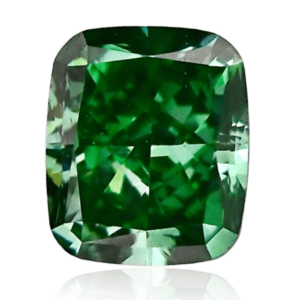 Fancy colored diamonds in green are usually in a light tone with low saturation. You most commonly see them in a muted yellowish green with brownish or grayish hints. In most fancy green diamonds, the color is primarily on the surface, rarely extending throughout the stone. This is why cutters try so hard at keeping as much of the stone’s natural rough that surrounds the girdle as they possibly can.
Fancy colored diamonds in green are usually in a light tone with low saturation. You most commonly see them in a muted yellowish green with brownish or grayish hints. In most fancy green diamonds, the color is primarily on the surface, rarely extending throughout the stone. This is why cutters try so hard at keeping as much of the stone’s natural rough that surrounds the girdle as they possibly can.
Green fancy diamonds derive their color from radiation displacing the carbon atoms away from their usual positions in the crystal. This can be a natural occurrence if a diamond deposit happens to be near some radioactive rocks. It can also be artificially induced with radiation.
Naturally occurring green colored diamonds are exceptionally rare. Due to their immense rarity, there is the distinct possibility that they’ve been treated with radiation. Therefore, green colored diamonds are always greeted with skepticism and inspected very carefully in gemological labs. Unfortunately, advanced testing of green diamonds cannot necessarily determine whether the color originated naturally or was artificially induced.
Fancy Brown Diamonds
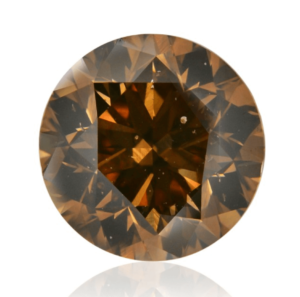 Of all the fancy colored diamonds, brown is the most commonly occurring color, as well as the earliest colored diamond used in jewelry. Romans in the 2nd Century often designed rings for brown diamonds. In the modern era, it took considerable time before brown diamonds gained popularity.
Of all the fancy colored diamonds, brown is the most commonly occurring color, as well as the earliest colored diamond used in jewelry. Romans in the 2nd Century often designed rings for brown diamonds. In the modern era, it took considerable time before brown diamonds gained popularity.
In fact, until the 1980s brown diamonds were typically used for industrial purposes. Then in the 1980s huge amounts of brown diamonds were discovered in the Argyle mines. This is when the Australians started setting them in fashion jewelry. They promoted them with catchy names like “champagne” and “cognac.” These marketing strategies worked, creating a demand for brown fancy diamonds. Brown diamonds are often seen in medium-priced jewelry pieces selling today.
Diamonds are color graded according to their strongest areas of color. These can be seen in the dark shaded areas in the Fancy Colored Diamonds.
Brown fancy diamonds range in color from very light to, of course, very dark. People buying brown diamonds seem to prefer medium to dark hues with a warm golden and even reddish tint. Generally, brown diamonds have a hint of green, yellow, orange or red tones to them.
Fancy Yellow Diamonds
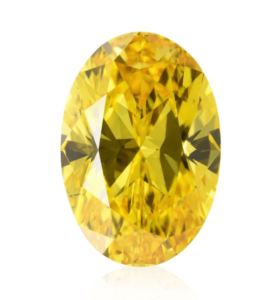 Yellow colored diamonds are the second most common fancy colored diamonds. They are often promoted as “canary diamonds.” This certainly is not an authentic grading term, but nonetheless, it is often used in the diamond trade to describe fancy colored diamonds in yellow.
Yellow colored diamonds are the second most common fancy colored diamonds. They are often promoted as “canary diamonds.” This certainly is not an authentic grading term, but nonetheless, it is often used in the diamond trade to describe fancy colored diamonds in yellow.
Fancy Black Diamonds
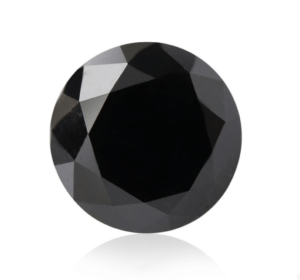 There really wasn’t much demand in the marketplace for black diamonds until more recently in the late 1990s. Once jewelry designers began putting them in pavé settings along with contrasting colorless diamonds, black diamonds began taking off.
There really wasn’t much demand in the marketplace for black diamonds until more recently in the late 1990s. Once jewelry designers began putting them in pavé settings along with contrasting colorless diamonds, black diamonds began taking off.
Fancy White & Grey Diamonds
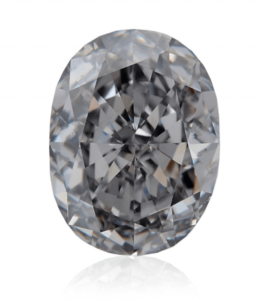
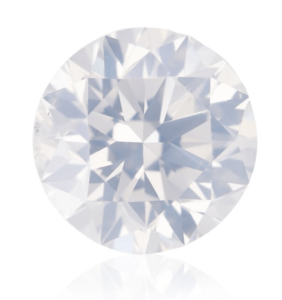 It may seem odd, but there is such a thing as white fancy colored diamonds, which appear milky white in color. White diamonds are sometimes cut to show stunning opalescent sparks of color.
It may seem odd, but there is such a thing as white fancy colored diamonds, which appear milky white in color. White diamonds are sometimes cut to show stunning opalescent sparks of color.
You also find fancy colored diamonds in grey. This can be caused by a high concentration of hydrogen in the stone and is considered an impurity.
Clarity Grade
When determining the value of a fancy colored diamond, its color is primary. Even if it has several inclusions lowering its clarity grade, color will reign supreme as long as it displays well face up and looks attractive. Inclusions threatening a stone’s durability can significantly diminish a fancy colored diamond’s value. These diamonds can also display color graining, which is thought of as an inclusion.
The Importance of the Diamonds Cut
The size and shape of a diamond can affect its color. A large diamond and/or one with a deep pavilion will allow light to travel farther through it. This usually brings out a richer, more vivid color.
The style of a diamond’s cut can also affect its color. Cutters have come to realize that mixed cuts, such as the radiant, can make a more vivid yellow in stones at the lower end of the color-grading scale. If these diamonds are carefully cut, yellow-tinted diamonds can be transformed into fancy yellows when seen face up. This will increase the perceived value and price.
As a bonus, a radiant cut provides a higher yield than the usual round brilliant. You will find most fancy colored diamonds in fancy shapes as well.
Carat Weight
As with normal diamonds, the larger the fancy colored diamond, the rarer, making them more valuable than smaller ones.
Cost of Fancy Colored Diamonds
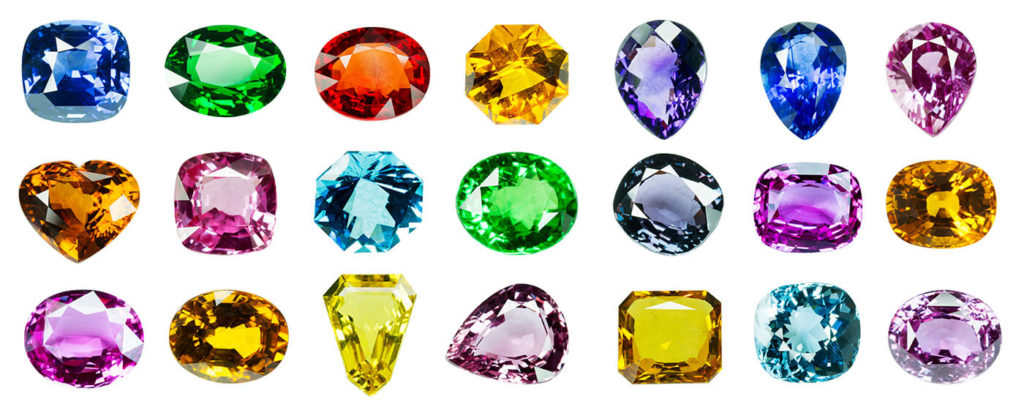
Colored diamonds are exceptionally rare, making up less than 0.1% of the diamonds found in mines. Even so, there is nice selection available with more affordable pricing than you would find with white diamonds.
1. Reasonably Affordable: Fancy colored diamonds in yellow, brown and grey.
A really nice 1-carat diamond in a radiant cut with VS1 clarity and G color costs about $5,500, whereas a 1-carat fancy colored diamond in yellow with VS2 clarity sells for about $4,500.
A .75-carat vivid yellow with VS clarity would sell for around $5,500, whereas a 1-carat vivid yellow would easily sell for more than $10,000. Brown and grey colored diamonds are less expensive.
2. Mid-range pricing: Intense and vivid diamonds in yellow and orange.
A vivid diamond in yellow or orange would cost more than an equally graded colorless diamond. For example, a 1-carat deep yellowish orange sells for $9,500, while a 1-carat round diamond with an E color grade and SI1 clarity sells for $7,500.
3. High priced: Blue, violet, purple, pink, pure oranges and green diamonds.
These fancy colored diamonds are among the rarest found anywhere in the world. These are the colors that we hear being auctioned off for millions of dollars. The baseline price per carat is in the tens of thousands. Any added attributes like a larger size or a more intense color would send the price soaring exponentially.
4. Ultra-high priced: Red Diamonds are Rarest Of All
A 0.27-carat purplish red fancy colored diamond in a radiant cut with S12 clarity will sell for around $130,000.
Naturally Formed vs. Lab Treated Fancy Colored Diamonds
One of the lab treatments most commonly done is on inexpensive brown diamonds. They are treated with high-temperature and high-pressure processes. This changes their color to copy the colors of a wide variety of naturally formed fancy colored diamonds.
If you are shopping for a colored diamond, processed diamonds are a lot less expensive than naturally formed fancy colored diamonds. Only the very cheapest diamonds are processed.
 How to tell the difference between naturally formed and lab treated colored diamonds:
How to tell the difference between naturally formed and lab treated colored diamonds:
The color saturation is so strong in lab treated diamonds that most of them actually resemble semi-precious stones.
Best Place to Shop for Fancy Colored Diamonds
One of the most reputable diamond dealers anywhere in the world is Leibish & Co. They have a huge selection of fancy colored diamonds. In fact, they supply diamonds to some of the most renowned luxury retailers across the world, including the majority of wholesale dealers that sell colored diamonds.
They launched their own website several years ago as a way to make it easier for their wholesale customers to glance through their inventory. Unexpectedly, regular shoppers suddenly responded, which led them to allow the public to shop on their site.
What’s wonderful about Leibish & Co. is that they don’t draw any distinction between wholesale and retail customers. Their diamonds are priced the same for everyone. When you go online shopping for diamond(s) at Leibish & Co., you get great retail service, while garnering the lowest price possible on fancy colored diamonds. Plus, all diamonds come with a GIA certificate (
Gemological Institute of America).

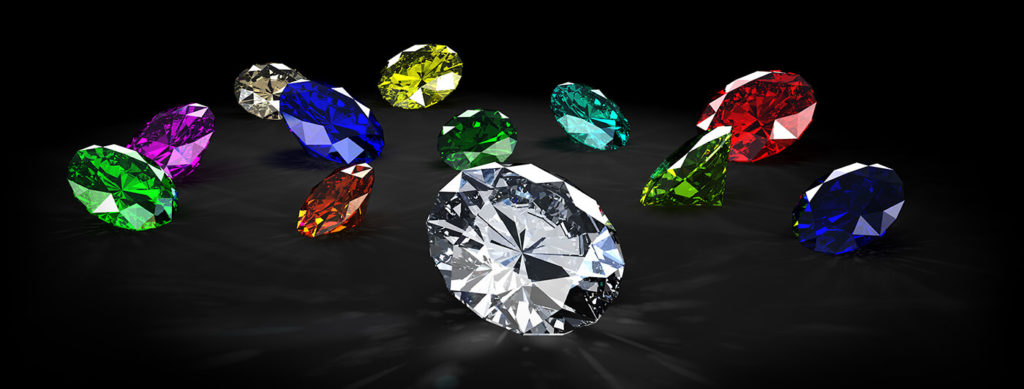
 How to tell the difference between naturally formed and lab treated colored diamonds:
How to tell the difference between naturally formed and lab treated colored diamonds: